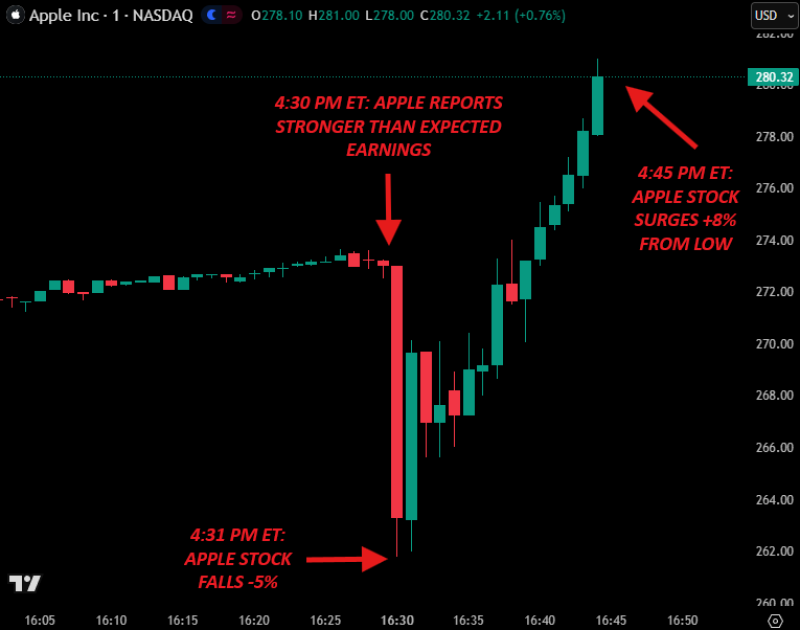Wall Street got a dose of pure chaos Thursday evening when Apple dropped its quarterly earnings. At 4:30 PM ET, the numbers looked great—revenue and earnings beat expectations, plus Apple was sitting on a massive $132 billion cash pile. But then something weird happened: the stock nosedived anyway, losing 5% in a single minute before violently bouncing back. By 4:45 PM, Apple had rocketed 8% from its low, erasing the panic and leaving traders stunned. The whole thing played out so fast that most people hadn't even finished reading the earnings release.
What Actually Happened (Minute by Minute)

4:30 PM ET – Apple releases stellar quarterly results, beating Wall Street on both revenue and earnings. The $132 billion cash reserve gets mentioned, signaling rock-solid financial health.
4:31 PM ET – Despite the good news, the stock tanks 5% instantly, dropping to around $263. Algorithms and jittery traders seem spooked by cautious language around iPhone demand and forward guidance.
4:45 PM ET – Reality kicks in. Buyers flood back, pushing the stock up 8% from the bottom to roughly $280. Apple finishes the session positive, as if the panic never happened.
This kind of V-shaped whiplash is rare for a company as massive as Apple—it usually means the market freaked out first and thought second.
Why the Wild Ride?
A few things likely triggered the chaos:
- Algorithms gone rogue: High-frequency trading bots probably dumped shares based on headline keywords before actually reading the full report
- Guidance jitters: Apple's cautious tone on hardware sales created knee-jerk uncertainty, even though the core numbers were strong
- AI hype kicks in: Once investors digested the details—especially around AI integration and services growth—optimism took over
- Thin liquidity: After-hours trading has lower volume, so even modest selling or buying can cause exaggerated swings
Bottom line: emotion drove the drop, logic drove the recovery.
The Bigger Picture
Apple isn't a stranger to post-earnings drama, but this one stands out. A 13% intraday swing for a trillion-dollar company is almost unheard of in modern markets. It's a reminder that even blue-chip giants can trade like meme stocks when algorithms, headlines, and human psychology collide at high speed.
For investors, the lesson is simple: in today's hyperconnected markets, the story can completely rewrite itself before you've had time to blink. Apple's rebound to $280 shows the market still believes in its AI-driven future—but getting there involved a wild ride most traders won't soon forget.
 Peter Smith
Peter Smith

 Peter Smith
Peter Smith


